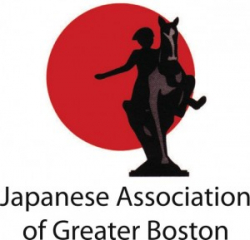Info Type
View Option
Sort by Month
Sort by Category
Back
This text has been translated by auto-translation. There may be a slight difference between the original text and the translation. (Original Language: 日本語)
2024/2/29 - 2024/3/16 / 大田区 / Other
Special Exhibition "Flower Scent: Ota's Plum Grove ~ Flowers to be Adored ~"
- [Contact]
- https://www.city.ota.tokyo.jp/seikatsu/manabu/hakubutsukan/tokubetsu/r5kikakuten_ootanobairin.html
- [Registrant]大田区
- [Language]日本語
- Posted : 2023/11/17
- Published : 2023/11/17
- Changed : 2023/11/17
- Total View : 270 persons
- Find local business with Town Guide
-
- San Francisco ・ This is an alumni associ...

-
San Francisco Inamonkai is an alumni association of Waseda University graduates living in the San Francisco ・ Bay Area. We have about 100 members and hold annual general meetings as well as picnics, ...
サンフランシスコ稲門会
-
- The long-established restaurant is passi...

-
Kitakata Ramen is one of the three most popular ramen in Japan. Kitakata Ramen Bannai" is the most popular among them and is a long-established restaurant loved by many people. Please enjoy the tast...
+1 (714) 557-2947Kitakata Ramen Ban Nai - Costa Mesa
-
- FLAT JP, Inc.
-
- We support Japanese children who are try...

-
Our experienced teachers have a wealth of teaching experience and can provide returnee students with an overwhelming amount of information to help them prepare for the entrance examinations.
+1 (408) 257-1343ena (San Jose)
-
- A non-profit organization that provides ...

-
We are a community center ( NPO ) established in December 2012, based on the San Diego Town Kids Japanese Language Class that started in 2010. Our goal is to contribute to the creation of a society w...
+1 (858) 380-5899Azuna Service Center
-
- Residential ・ Investment ・ Commercial ・ ...

-
Residential ・ Investment ・ Commercial ・ We are here to help you with real estate property sales and management ! Business Area : Orange County and nearby Los Angeles County, Riverside County, and Las...
+1 (866) 966-3217HomeSmart / Team Ichiro
-
- We are a stylish used car dealership loc...

-
A used car dealership located a little far from the city center, with a somewhat laid-back and relaxed atmosphere. Used car sales ・ Buying ・ We are dealing with non-life insurance ! We also have auto...
+81-436-37-1775YM.BASE
-
- JAGB is an acronym for Japanese Associat...

-
The Japanese Association of Boston was founded in 1965 to "conduct educational, cultural, welfare, charitable, and other activities for the benefit of Japanese residents in Boston and to encourage mut...
+1 (781) 643-1061Japanese Association of Greater Boston (JAGB)
-
- We handle residential and commercial bro...

-
We provide relocation life start-up services, rental properties, investment properties, and brokerage of real estate sales and purchases with home to home, people to people, and hospitality. Our exper...
+1 (925) 381-6572H2H GLOBAL JAPAN, LLC
-
- We are a pediatric clinic located in Tor...

-
We provide pediatric care in Japanese in Torrance, California. It is located right next to Torrance Memorial Hospital. The director has experience as a pediatrician in Japan and is well versed in the...
+1 (310) 483-7880Naoko Matsumoto, M.D., Inc.
-
- For Your Career Design - Making everyone...

-
As a "trustworthy and reliable job search partner," we will help you achieve your career goals. QUICK USA's motto is "Making everyone happy !", and we are your partner to design your career togeth...
+1 (310) 323-9190QUICK USA, INC.
-
- Why don't you have a cut and color befor...

-
You want to dye your hair gray for tomorrow's trip, but you have to pick up your child from school or prepare a meal … Have you given up on going to a hair salon ? BON is located in AEON MALL, so you ...
+81-439-32-1911カットとカラーの専門店 BON
-
- We offer advice for people of all ages, ...

-
It is important to care from this season when ultraviolet rays become stronger ! Experience a full whitening item for 500 yen ? We will teach you carefully even if you are a first timer !.
+81-80-1161-6161メナード フェイシャルサロン木更津羽鳥野
-

-
+81-438-38-4368hanahaco
-
- Water leak ・ In short ・ Emergency plumbi...

-
We, Fukuda Suido, are a waterworks company operating mainly in Kimitsu City ・ Futtsu City ・ Kisarazu City ・ Sodegaura City, Chiba Prefecture, with the motto "Thanks to you" and a humble heart. From re...
+81-439-52-0962(有)福田水道


Kamata was known as a famous plum blossom viewing spot in the Edo period (1603-1868), so much so that it was called "Ume-no-Kimura" (plum tree village). In particular, the "Kamata Umeyashiki" (梅屋敷), which was visited by the shoguns of the Edo Shogunate and the Emperor Meiji, remained a bustling place until the beginning of the 20th century.
On the other hand, the Japanese-style painter Ito Shinsui once had his home and studio in the quiet garden "Ikegami Ume-en" located on the hillside to the west of Ikegami Honmonji Temple. Fascinated by the plum grove there, Shinsui moved to Ikegami and devoted himself to sketching the garden trees and researching his works, but the building was destroyed by fire during the war. After the war, the land belonged to Makoto Ogura, who ran an eel-farming wholesale business in Tsukiji, and after his death, it was transferred to the Tokyo Metropolitan Government in accordance with the will of his bereaved family, and in 1978 ( the garden became managed by Ota Ward. More than 350 plum trees are planted in the garden, which attracts many visitors every year when the flowers are at their best.
Going back in time, there were other plum viewing spots in Ota Ward, although they have disappeared now. Because of this deep historical connection with the plum tree, the plum tree was designated as the "ward flower" in 1976 ).
The ume, the flower of early spring, is said to be "the first of a hundred flowers," and has attracted many people since ancient times as a flower that reminds us of the arrival of spring. This exhibition introduces ume (plum) viewing spots scattered or formerly scattered in the Ota Ward area. We hope that visitors to the museum will experience an early taste of spring while learning about the close ties between Ota Ward and the ume tree.